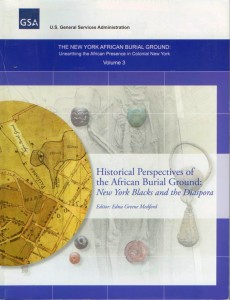New York African Burial Ground History
 Edna Greene Medford (Editor)
Edna Greene Medford (Editor)
The unearthing of the colonial cemetery known historically as the “Negroes Burying Ground” in Lower Manhattan in 1991 has given both scholars and the general public the opportunity to study and comprehend the broad dimensions of the African- American experience. The African Burial Ground and the remains contained within it provide a unique vantage point from which to view New York City’s Africans and their descendants over two centuries. As the final resting place for thousands of enslaved and free black people who lived and labored in the city from roughly 1627 until the end of the eighteenth century, the cemetery offers insight into physical stressors, ethnic identity, cultural continuities and assimilation. While each burial tells an individual story, collectively, they, along with archival evidence, enable us to reconstruct a forgotten community and to reveal the centrality of a marginalized people. Following the suggestions outlined by the team of multi-disciplinary scholars who developed the Research Design in 1991, the African Burial Ground Project historical researchers pursued two goals.
First, they attempted to place the biological and anthropological findings from the cemetery into a historical context, suggesting explanations for certain physical characteristics present in the skeletal remains. Their second task has been to provide a broader understanding of the lives of enslaved and free people in colonial New York. Hence, historical research has addressed issues beyond those specific to the burial ground population.

